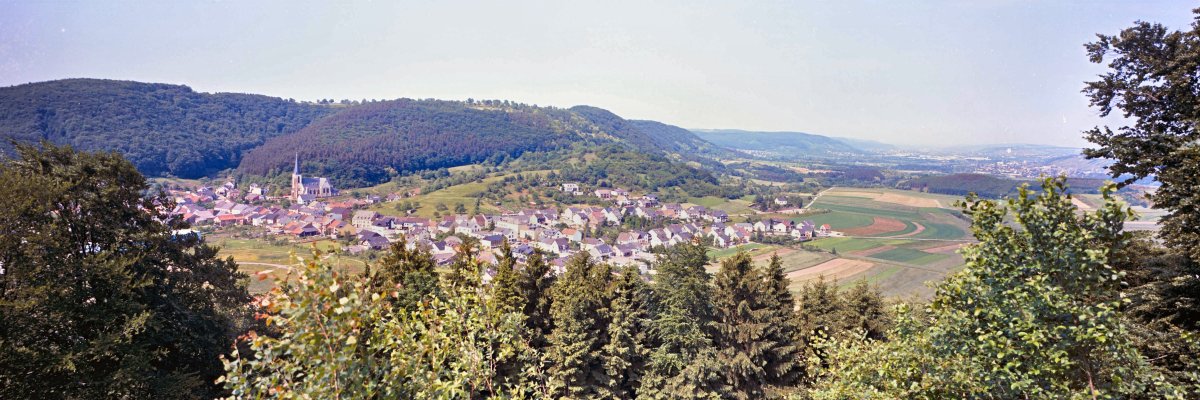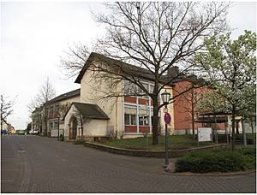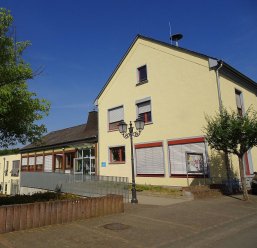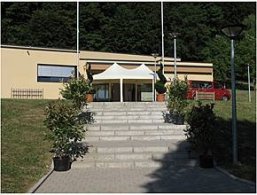tavern
The largest local community in the Konz association is located in a valley between the Saar and the Moselle, which is open to the north-east, about 6 km from Konz. Its historical development is determined by the formation of two town centres, one of which was Luxembourgish and the other electoral Trier. Today, the historic core can be recognized by a denser development, with the town spreading out in all directions around 1900. An early modern past is still reminiscent of the street "An derSpanish Corner", which used to be in the Luxembourg part.
An old Roman road, which touched the village and led from Metz to Trier via Konz, has long suggested that Tawern was already inhabited in Roman times. A road station with rest stops, the Tabernae, is said to have been located before the ascent to the Saargau plateau, which, according to the findings, also gave the place its name. In 1986/1987 an extensive Roman temple complex was discovered and excavated on the Metzenberg. Since parts of this temple district, which is now easily accessible from Tawern, have been reconstructed, a large temple festival is celebrated every two years in August in a modeled Roman ambience. In the autumn of 1995, the remains of a Gallo-Roman settlement were found during construction work in the area. The local community of Tawern is considering an appropriate presentation of the finds, because this Vicus Taberna inspires the imagination of archaeologists.
Despite its impressive Roman past, Tawern was first mentioned in a document in the year 1000. On the slope of the Albachtal, in a westerly direction, lies the district of Fellerich, which belonged to Tawern as a result of a municipal merger in 1974. The small district is characterized by agriculture and viticulture. The first documented mention as Velrecke was known in the year 1000. A settlement of the place is suspected for the pre-Franconian period. Just like the smaller part of Tawern, Fellerich also belonged to the Duchy of Luxembourg in the early modern period.
Sights - e.g.
Roman road settlement (vicus) in Tawern
The vicus is below the Metzenberg in the Mannebach valley. From 1994-1996, the floor plans of a total of nine buildings on both sides of the Roman road, which led from the Mediterranean via Metz and Konz to Trier, were uncovered. The most interesting find in the vicus is a smithy, which can be traced back to layers up to 50 cm thick with an extremely high proportion of charcoal, tiny iron particles and areas of glowing soil, as well as numerous slag finds. Not only could the riding and draft animals be shod there, but the production of iron tools and equipment is also attested.
A faithful model of the Roman street settlement on a scale of 1:75 is set up in a pavilion. Above all, in the middle of the forest, towers the large, reconstructed Tawern temple complex.
Temple complex Tawern
The large, reconstructed temple complex is enthroned in the middle of the forest above the old roadside settlement Vicus Tabernae, the origin of the town of Tawern. Here on the Metzenberg, about 15 kilometers from Trier, travelers on their way to Trier could get their first glimpse of the city. Above all, however, they had the opportunity to thank the gods and to propitiate them. Mercury was the main god of the temple district and responsible for trade, commerce and transport. But not only travelers came here, the temples were also a place of worship for local pilgrims. A portal building led into the district. Two temples of different types have been rebuilt on the higher terrace, a Gallo-Roman ambulatory and a chapel next to it.
The temple complex is located on hiking trail G11. From the forest car park it is about a 10 to 15 minute walk.additional
Tower of the old parish church, Mannebachtal with ponds
Heraldry (Heraldry)
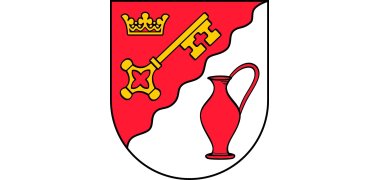
In 1981 Tawern received its own coat of arms
From the approval document of the Trier district government of June 29, 1981:
Based on Section 5, Paragraph 1 of the Municipal Code for Rhineland-Palatinate of December 14, 1973 in conjunction with Section 2 of the State Ordinance for the Implementation of the Municipal Code for Rhineland-Palatinate of February 21, 1974, we hereby grant the Municipality of Tawern, District of Trier-Saarburg,
Permission to use your own coat of arms with the following coat of arms description:
"From red to silver divided diagonally to the left by a wavy cut, above a golden key turned diagonally to the left, surmounted by a crown, below a red Roman jug."
Reason :
Until the end of the feudal period, Tawern was divided into an Electoral Trier and a Luxembourg part by the stream that flows through the town. The wave cut is an indication of this.
Churches and local patrons have always been Peter and Paul. The 1743 visitation report of the Perl chapter also mentions the "St. Margaret's Chapel, located some distance from the village, which dates from 1572" (de Lorenzi, I, p. 539). The key stands for the patron St. Peter, and the crown as a symbol for the important St. Margaret Chapel.
The place name Tawern goes back to the Latin Taberna = rest stop. A Roman trading pitcher is included as a reference to this.
